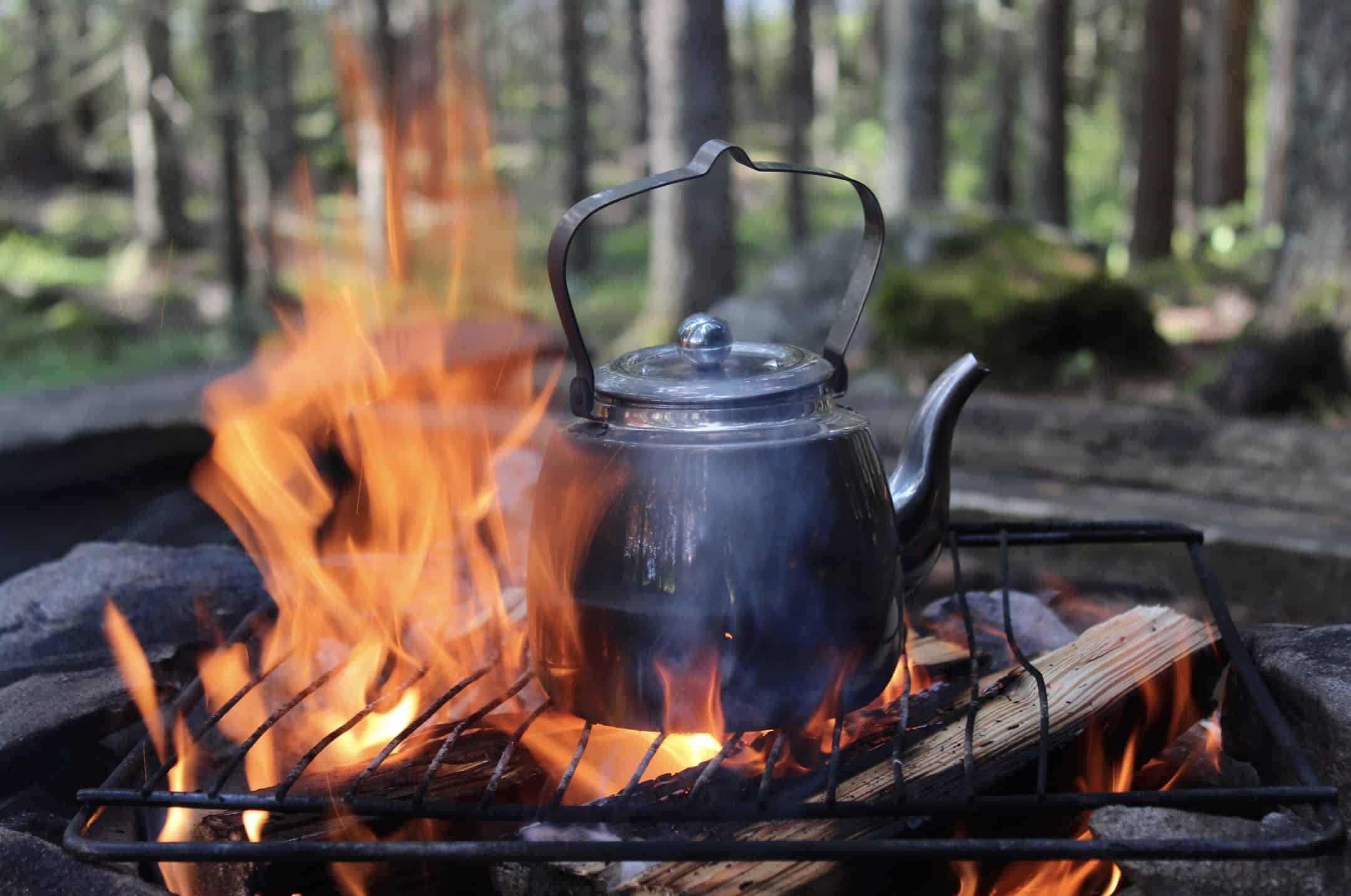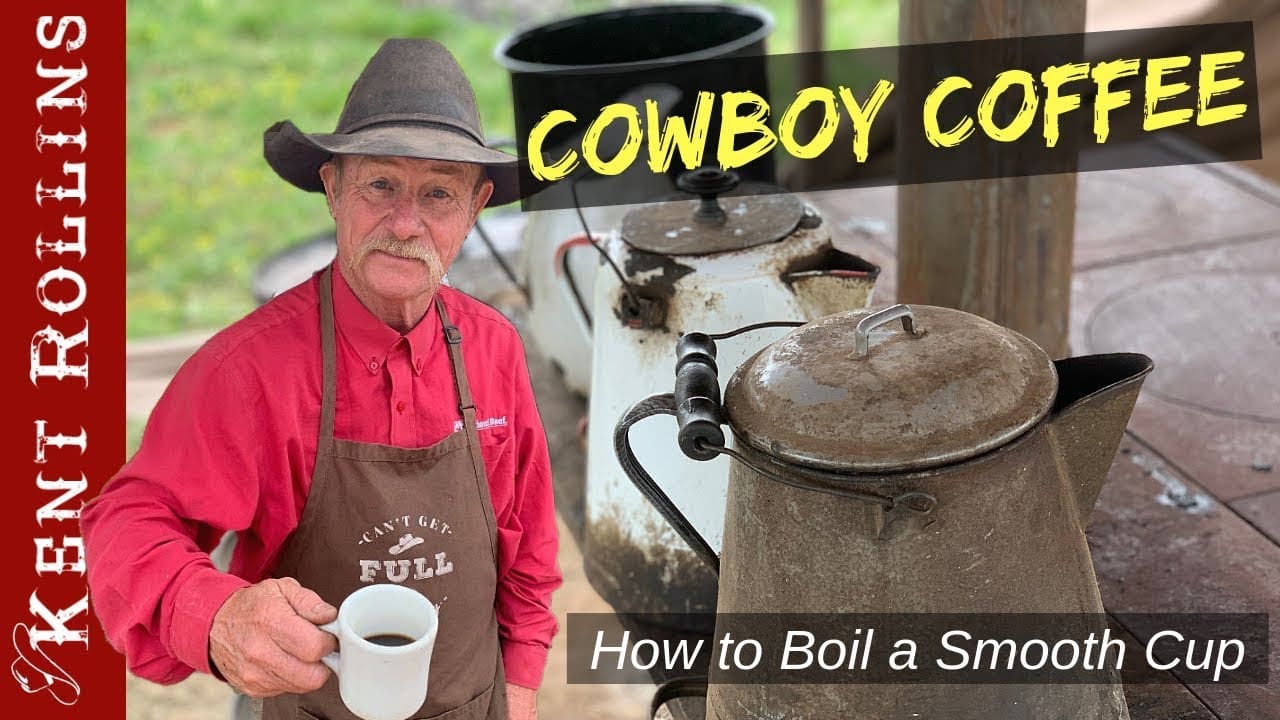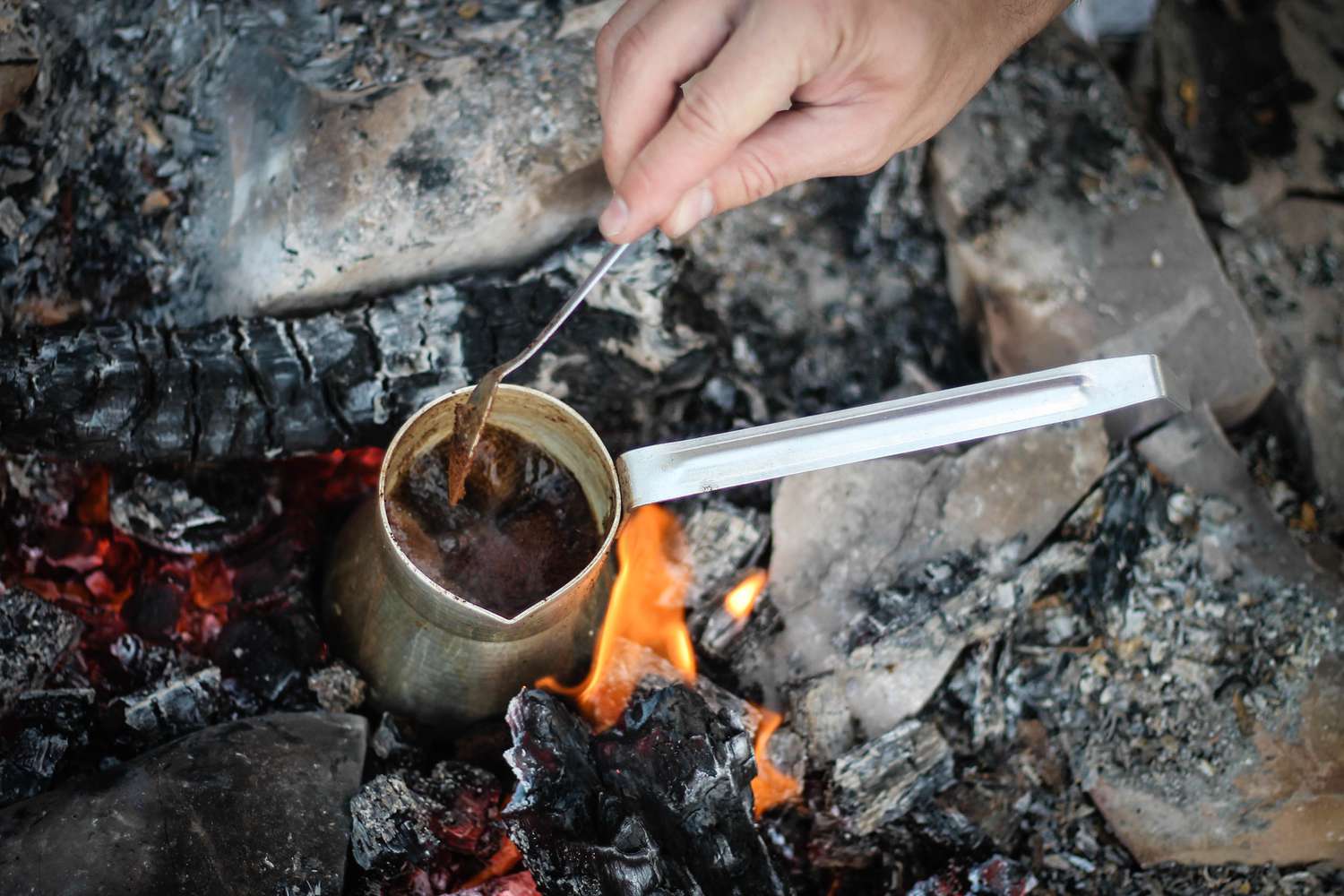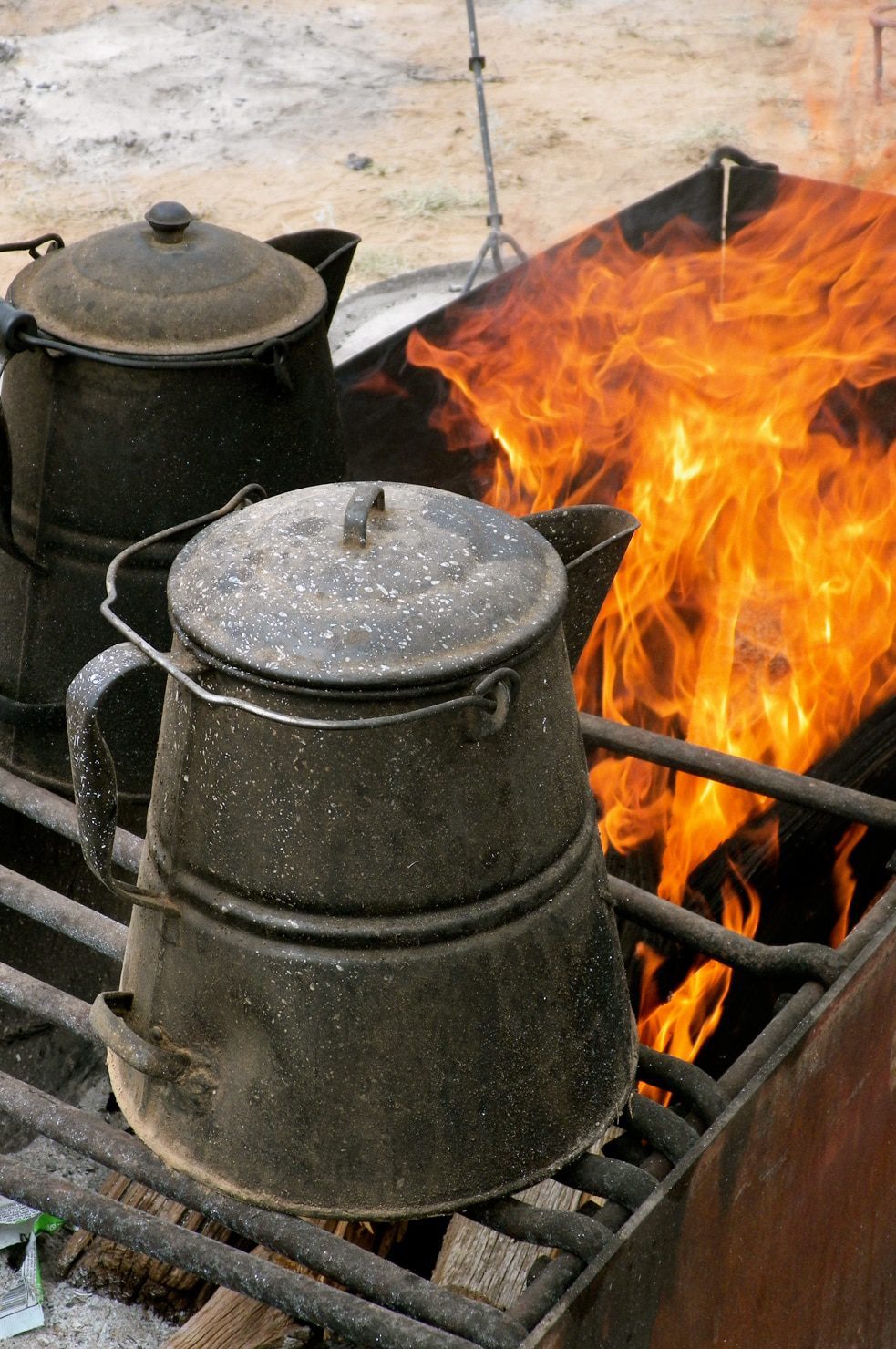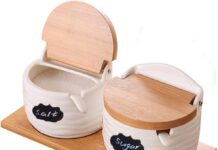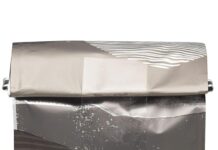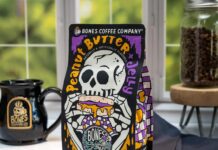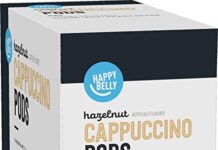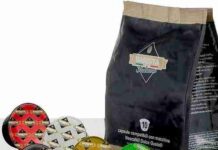Howdy! We’re here to spill the beans and give you the lowdown on cowboy coffee. This rustic brew, born out of the Wild West, has a rich history and a unique brewing technique that sets it apart from your regular cup of Joe. So saddle up and join us as we explore the roots, the brewing process, and the enduring charm of cowboy coffee. Get ready for a caffeine kick like no other!
What is Cowboy Coffee?
This image is property of theroasterie.com.
Origin and History of Cowboy Coffee
Cowboy coffee is a simple, rustic brew that has its roots in the Wild West. It was a staple in the diets of cowboys and pioneers who roamed the open range during the 19th century. These adventurous individuals, with their rugged spirit and love for the great outdoors, relied on cowboy coffee to keep them going during long days on the trail.
This brewing method can be traced back to the chuck wagon kitchens that fed hungry cowhands on cattle drives. With limited resources and equipment, making coffee was a straightforward and no-frills affair.
Ingredients and Brewing Method
The recipe for cowboy coffee is delightfully simple, with only two ingredients required: coffee grounds and water. To brew a pot of cowboy coffee, start by heating water in a large, sturdy pot over an open flame or a campfire. Once the water begins to boil, remove it from the heat briefly and add a generous amount of coarsely ground coffee. The coffee grounds are then stirred in, allowing them to steep for a few minutes before returning the pot to the heat.
Unlike other brewing methods, there is no filtration or fancy equipment involved. Once the coffee has steeped to your preferred strength, a common trick to encourage the grounds to settle is to pour a small amount of cold water into the pot. This causes the grounds to sink to the bottom, making it easier to pour a relatively clear cup of coffee.
Equipment Needed for Cowboy Coffee
One of the beauties of cowboy coffee is its simplicity, which is reflected in the minimal equipment required. All you really need is a large pot, preferably made of durable materials like stainless steel or cast iron, and a heat source. A sturdy spoon or stick for stirring is also handy.
However, over time, the cowboy coffee brewing process has evolved, and enthusiasts have added some optional equipment to enhance the experience. Many people now prefer using a coffee grinder to freshly grind the beans, ensuring a robust and flavorful brew. Some also opt for a coffee sock or muslin bag to filter out the grounds while pouring.
Benefits of Drinking Cowboy Coffee
Besides its historical and cultural significance, cowboy coffee carries some distinct benefits that make it a beloved method of brewing among coffee aficionados.
First and foremost, cowboy coffee is known for its strong and robust flavor. The brewing process allows for a full extraction of the coffee’s natural oils, resulting in a rich and bold taste that many find irresistible. This hearty flavor is often described as earthy and satisfying.
Moreover, cowboy coffee is a versatile brew that can be enjoyed in various settings. Whether you’re camping in the wilderness, exploring the great outdoors, or simply craving a rustic cup of coffee at home, cowboy coffee offers a delightful way to experience coffee in its purest form.
This image is property of www.acouplecooks.com.
Challenges of Making Cowboy Coffee
While cowboy coffee is beloved for its simplicity, it does come with a few challenges that brewers should be aware of.
One challenge is the potential for over-extraction. If the coffee grounds are left to steep for too long, the resulting brew can become bitter and overpowering. It’s crucial to monitor the brewing time carefully and experiment to find the perfect balance between strength and flavor.
Another challenge is the presence of coffee grounds in the final cup. Since cowboy coffee doesn’t involve any filtration, there’s a chance that some grounds may end up in your mug. This can be mitigated by allowing the coffee to settle before pouring, or by using optional filtering methods like a coffee sock or muslin bag.
Tips for Brewing the Best Cowboy Coffee
To ensure the best-tasting cup of cowboy coffee, here are some tips to keep in mind:
-
Use freshly roasted and coarsely ground coffee beans. The freshness and grind of the beans greatly impact the flavor and brewing process.
-
Experiment with the coffee-to-water ratio. While there are no strict rules, a general guideline is to use around two tablespoons of coffee grounds for every six ounces of water. Adjust to your preference.
-
Control the brewing time. As mentioned earlier, monitor the steeping time to avoid over-extraction. Start with a few minutes and adjust according to your taste.
-
Pour a small amount of cold water in the pot before serving. This helps the coffee grounds settle to the bottom, making for a smoother pour.
This image is property of i.ytimg.com.
Variations of Cowboy Coffee
Although the traditional cowboy coffee recipe is pretty straightforward, there are a few variations that can add a touch of creativity and flavor to your brew.
One popular variation is adding a pinch of salt to the coffee grounds before brewing. This may sound unusual, but salt can help reduce the bitterness and enhance the overall taste of the coffee.
For those with a sweet tooth, adding a dash of cinnamon or a spoonful of brown sugar can provide a delightful twist. These additions complement the bold flavor of cowboy coffee and lend a warm, cozy note.
Cowboy Coffee vs. Traditional Brewing Methods
How does cowboy coffee compare to more traditional brewing methods, such as using a drip coffee maker or a French press? While personal preference plays a significant role, cowboy coffee offers a unique experience and several advantages worth considering.
One of the main distinctions is the robust flavor of cowboy coffee. The absence of paper filters and advanced brewing techniques allows for a fuller extraction of the coffee’s natural oils and flavors, resulting in a strong and bold cup of joe.
Additionally, cowboy coffee allows for a more immersive brewing process. From brewing over an open flame to the visual spectacle of watching the coffee settle, the adventure and ritual of making cowboy coffee can be a joy in itself.
That being said, traditional brewing methods are often more convenient and offer greater control over the brewing variables. Drip coffee makers and French presses allow for precise measurements, water temperature control, and easy cleanup. It ultimately comes down to personal preference and the desired coffee-drinking experience.
This image is property of www.treehugger.com.
Cowboy Coffee Recipes and Recommendations
Now that you’re familiar with the history, brewing process, and variations of cowboy coffee, it’s time to try it for yourself. Here are a couple of cowboy coffee recipes to get you started:
Classic Cowboy Coffee
-
Ingredients:
- 1 cup of water per serving
- 1 tablespoon of coarsely ground coffee per serving
-
Instructions:
- Heat the water in a large pot until it reaches a rolling boil.
- Remove the pot from the heat momentarily and add the coffee grounds.
- Stir the coffee grounds into the water and let it steep for 4-5 minutes.
- Pour a small amount of cold water into the pot to settle the grounds.
- Slowly pour the coffee into cups, leaving any settled grounds in the pot.
Sweet and Spicy Cowboy Coffee
-
Ingredients:
- 1 cup of water per serving
- 1 tablespoon of coarsely ground coffee per serving
- 1/4 teaspoon of ground cinnamon
- 1 teaspoon of brown sugar
-
Instructions:
- Follow the instructions for classic cowboy coffee, but add the cinnamon and brown sugar to the coffee grounds before brewing.
- Adjust the amount of sugar and cinnamon to your preference.
Conclusion
Cowboy coffee is a timeless brewing method with a rich history and a flavorful cup to offer. Whether you’re an adventurous outdoor enthusiast or simply looking for a unique coffee experience, cowboy coffee is worth exploring. Its simplicity, robust flavor, and versatility make it a beloved choice among coffee lovers worldwide. So grab your trusty pot, gather around the campfire, and savor the invigorating richness of cowboy coffee.
This image is property of sprudge.com.



